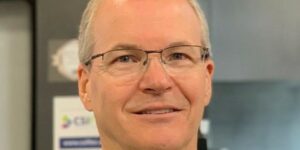Fast Prototyping Innovation into Emerging Markets
3-Dimensional Services used unconventional single part and low volume production technology to bring a game changing lighting system to market that also aids the environment.
Posted: May 14, 2012
The firm has built its success on the use of advanced process methods, with an extensive array of in-house manufacturing technologies and the varied talents of its highly skilled staff. This confluence of factors enables its shop to provide actual prototype parts – not just models – up to 70 percent faster than other conventionally equipped prototype shops.
While the company created the lighting modules for the new product line, 3-Dimensional Services was tasked with creating the metal fixtures that would house them. “The fixtures began as low carbon steel blanks,” says Scott Duffie, a senior sales engineer for 3-Dimensional Services. “First, the blanks were laser cut to near finish dimensions on one of our 5-axis lasers.” This shop has no less than fifteen 5-axis lasers, so no job ever sits idle waiting for an open laser. These 5-axis lasers, the largest of which boasts a 5 ft x 10 ft cutting area, are generally used to process the more complex parts and contours. If 5-axis capabilities aren’t required, the company typically uses its seven 3-axis lasers.
Three different sizes of the fixtures were needed, the largest of which measured 2 ft x 4 ft, and this meant that three different forming tools were required. Rapid tool design was accomplished using extensive design and engineering that could utilize over 30 high-speed terminals with the leading software packages and work from virtually any data files. Three separate three-piece forming tools, each consisting of a punch, die and draw ring, were designed.
Machining programs were generated from these designs and offloaded to CNC machining centers so jobs never have to wait for an available machine. The tools were actually cut from aluminum rather than from tool steel because the softer metal could be machined faster, but very accurately and to a high quality finish. This was important because as Duffie notes, “These parts, because of the environments they were intended for, must have a Class A finish with no wrinkles, nicks or flaws.”
Next, the parts were formed on three 800 ton Dake hydraulic presses with a 70 in x 100 in beds, after which the parts, from 20 pieces to 75 pieces for each of the three sizes, were taken back to a 5-axis laser for final trimming. The parts were then transferred back to the hydraulic presses for secondary bending operations in which some of the trimmed edges were flanged or hemmed. This required three bending tools, one for each part size. These additional tools were created using the same prototyping technology and with the same speed as the three original forming tools.
“The parts underwent final checks, were then powder coated and shipped,” explains Duffie. “All of this occurred within the three-to-four week time frame the customer had specified. With this job there was the extra satisfaction of knowing that our technology and know-how was helping to bring energy efficient products to market, products that can help all of us reduce our dependency on increasingly costly fossil fuels.”
3-Dimensional Services, 2547 product Drive, Rochester Hills, Michigan 48309, 248-852-1333, Fax: 248-852-2110, www.3dimensional.com.



